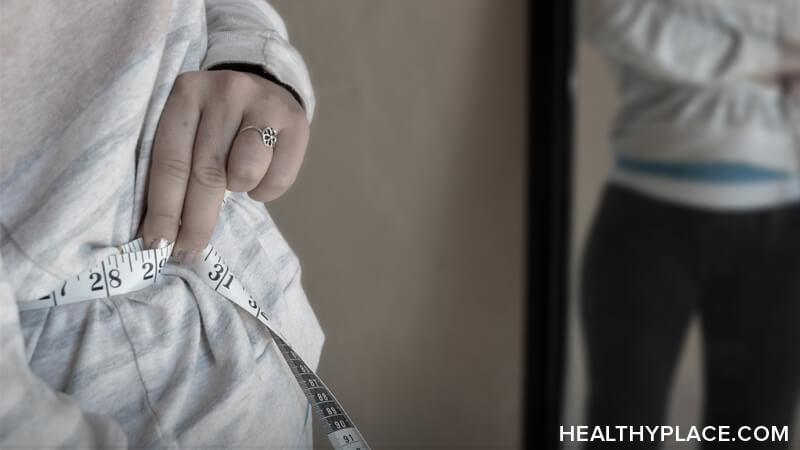What Happens When Eating Disorders and Body Dysmorphia Merge

Do you know the relationship between eating disorders and body dysmorphia? I remember the first time I stood in front of a mirror, scrutinizing every square-inch of my reflection. My thighs were not lean enough. My arms lacked definition. My stomach looked bloated underneath my shirt. My face registered the deep, gut-level disappointment I felt about my entire appearance. If I could just tweak those “problem areas”—shed a pound here, tone a muscle there—surely the mirror and I would become friends, or start tolerating each other at least. During the most critical and self-deprecating phases of my eating disorder, I had no idea this mirror-image was not reality, but a false representation of my distorted beliefs. I had never heard the term “body dysmorphia” or that it affects an estimated one in 50 people.1 Moreover, I did not make the connection I was one of those people, but eating disorders and body dysmorphia often go together.
The Connection Between Eating Disorders and Body Dysmorphia
Individuals who suffer from body dysmorphic disorder (BDD) experience intense anxiety triggered by perceived flaws in certain areas of the body. These obsessive thoughts can be a result of personal convictions, external messages or social constructs of beauty (The Struggle of The Perfect Body Image). But no matter the cause, BDD leads to severe discontent and often extreme methods to “fix” the body part in question.
For this reason, those who deal with BDD often exhibit overlapping symptoms of anorexia, bulimia or binge eating disorder, too. In many cases, they attempt to resolve the defects in their appearance through calorie restriction, obsessive exercise rituals, binging-purging cycles and similar patterns of behavior. Although two separate illnesses, BDD and eating disorders can become so enmeshed that sufferers are incapable of seeing past their imagined deficiencies.
An example of this might be someone who has convinced herself that she weighs too much after a thorough inspection in the mirror, so, over time, she counteracts this belief—although unfounded and inaccurate—by starving herself to the point of looking emaciated. Based on her own rigid perception, this woman’s fears of inadequacy have spiraled into an eating disorder.
When I Broke the Cycle of Body Dysmorphia and an Eating Disorder
Just as I recall the first time I stared at myself with loathing and disgust, I also remember finally seeing the truth mirrored back at me, face-to-face. The monologue of my inner critic silenced for a moment, and I gazed without bias or agenda at the body I once assumed was flawed beyond repair.
My thighs appeared strong and athletic. My arms showed traces of new muscle tone. My stomach looked proportionate to the rest of my torso. I had a healthy, functioning, vivacious body that withstood the abuse I had put it through, chasing after an illusion. This sudden awareness terrified my eating disorder who never wanted me to be objective about my appearance.
The more impressionable I am, the easier I can be controlled in both thought and action—the eating disorder knows this. But on that particular morning, it lost a weapon in its arsenal because I stared into reality and made peace with a girl in the mirror who is neither repulsive nor deficient, has imperfections but is not limited by them, moves through her life with confidence, and shares more similarities with me than I ever realized before.
I am not suggesting this distorted mindset vanishes in a flash of epiphany, and I guarantee it will come back if given the chance, after all, eating disorders and body dysmorphia are powerful. But I will advise this: just consider the possibility that human beings are more significant, valuable, unique, idiosyncratic, multi-faceted and beautiful than a mirror-image can reflect. And maybe then, you will start believing those same truths about yourself.
Sources
1 Prevalence of BDD. (2014, December 04). Retrieved October 04, 2017.
APA Reference
Schurrer, M.
(2017, October 4). What Happens When Eating Disorders and Body Dysmorphia Merge, HealthyPlace. Retrieved
on 2026, January 7 from https://www.healthyplace.com/blogs/survivinged/2017/10/what-happens-when-eating-disorders-and-body-dysmorphia-merge